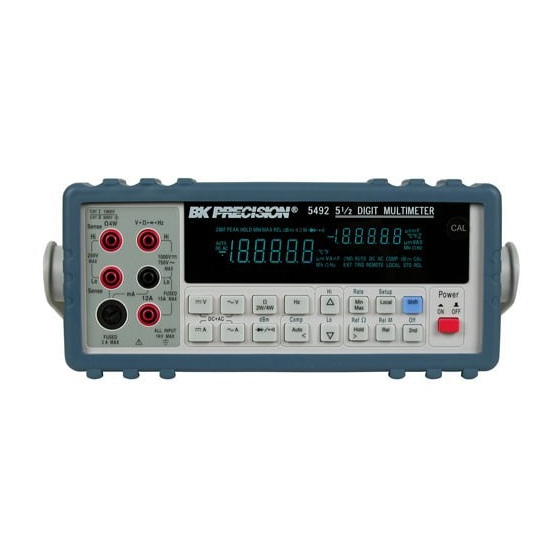Advertisement
Quick Links
1-1
Introducing the 5 1/2 Digit Dual Display Bench Multimeters
1. This operation manual contains information and warning that must be
followed to ensure user operation safety and to retain the meter safety
condition.
2. The term "5492" and "5491" will be used to refer to respective models
when descriptions for either model is applied.
3. The term "the meter" will be used to refer to both "5492" and "5491"
when descriptions are applied to both models.
TO ENSURE PERSONAL SAFETY AND TO AVOID DAMAGING THE
METER AND THE EQUIPMENT CONNECTED, READ "GETTING
STARTED" IN SECTION 2-2 BEFORE USING THE METERS.
The Dual Display Multimeter 5492 & 5491 (also referred to as "the meter" in
this manual) are 5 1/2 d igit multimeters with 120,000 count high resolution.
Both meters are designed for bench-top, field service, and system applications
with a high performance/price ratio. Complete specifications are provided in
Appendix A for 5492 and B for 5491 respectively.
With the RS-232 computer interface (standard), the meter is fully programmable
for use on the RS-232 interface.
With the IEEE-488 computer interface (optional) installed, the 5492 is fully
programmable for use on IEEE-488.1 interface bus (1987). The meter is also
designed in compliance with supplemental standard IEEE-488.2 (1987).
NOTE
Precaution!
TEST EQUIPMENT DEPOT
99 WASHINGTON STREET
MELROSE, MA 02176-6024
TEL: 800 517 8431
FAX: 781 665 0780
WWW.TESTEQUIPMENTDEPOT.COM
1
Section 1
Introduction
Advertisement


















Need help?
Do you have a question about the 5492 and is the answer not in the manual?
Questions and answers